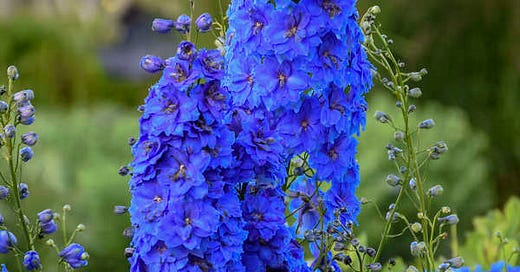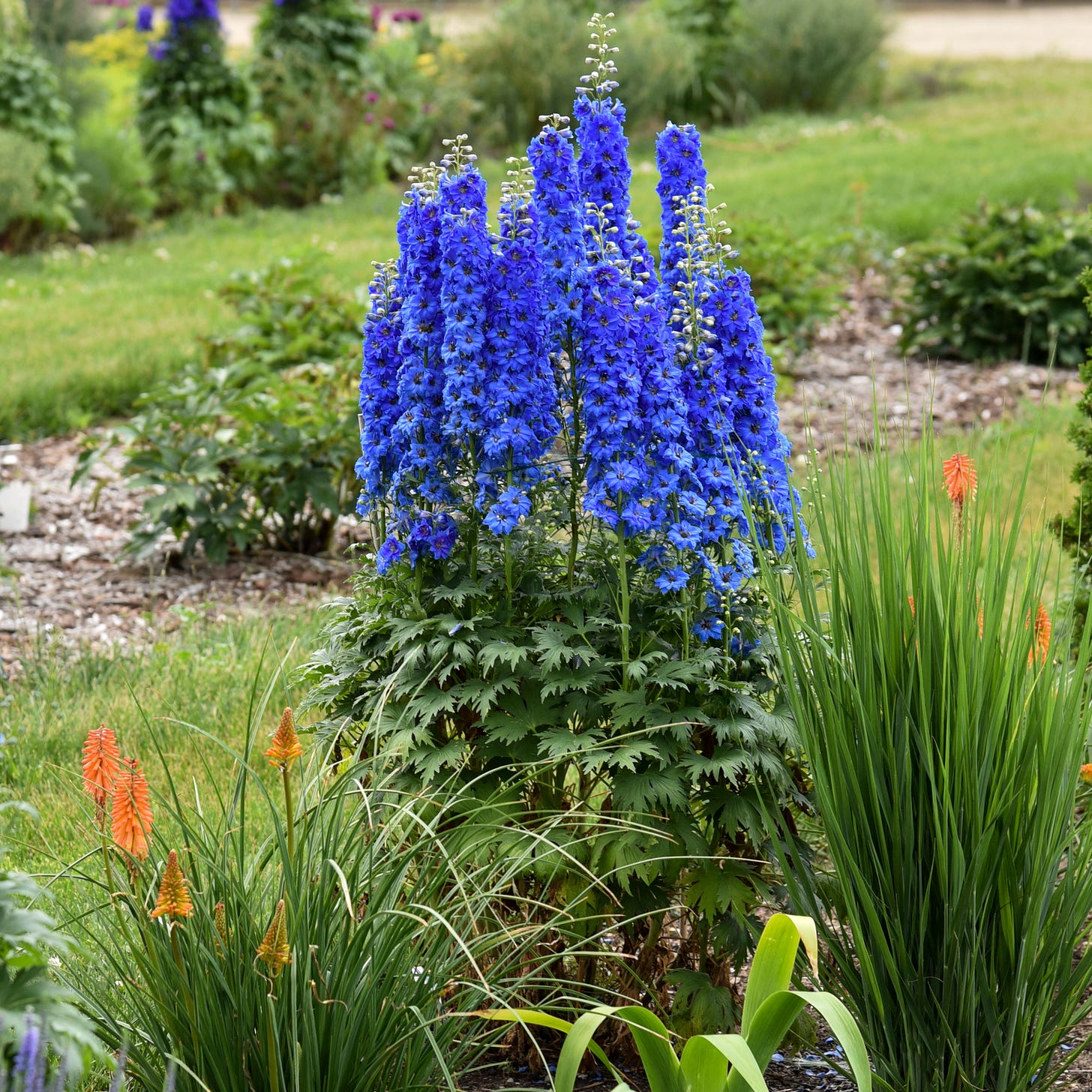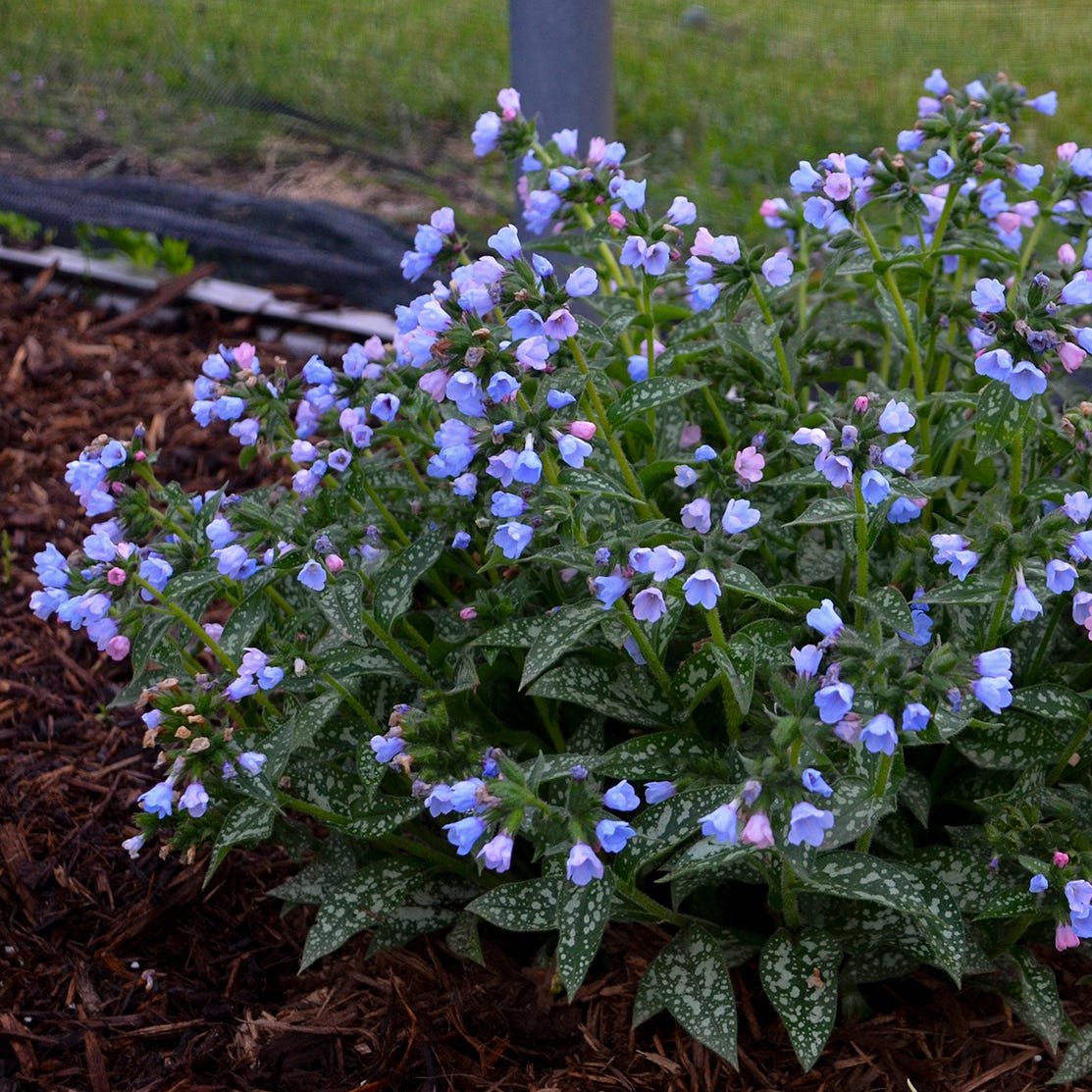Is there a gardener on earth who doesn’t love blue in their garden? In fact, is there a person on earth who doesn’t love blue?
I always thought that blue is the preferred colour of women, but turns out it is the preferred colour of men as well. According to this small study, 57% of men said they preferred the colour blue, while 35% of women said the same.
Blue has a lot of positive connotations:
Blue is the color of the sky and sea. It is often associated with depth and stability. It symbolizes trust, loyalty, wisdom, confidence, intelligence, faith, truth, and heaven.
Blue is considered beneficial to the mind and body. It slows human metabolism and produces a calming effect. Blue is strongly associated with tranquility and calmness. In heraldry, blue is used to symbolize piety and sincerity.
Anyway, as blue is universally loved, let’s look at some perennials that not only fit the bill in terms of the colour of their blooms, but also at how they can fulfill certain roles in the garden — both sunny gardens and shady ones.
Of course the first perennial I think of when I think of blue is the statuesque delphinium. This one is called ‘Million Dollar Blue’ (Delphinium elatum ‘Million Dollar Blue’) and it only reaches 2 1/2 to 3 feet high. This is a good thing as it is not liable to keel over in a strong wind or driving rain the very second its buds unfold. Most old fashioned delphiniums are twice that height and really do need an elaborate staking routine to keep them from being destroyed, even just by the weight of their blooming spires.
This one doesn’t need support as its stems are bred not only shorter but sturdier too. It pairs nicely with grassy foliage and in this planting it sits behind orange red hot poker (Kniphofia), a perennial that is iffy for us here in zone 4B-5A — so instead maybe try an orange daylily. Delphinium ‘Million Dollar Blue’ can bloom twice for the lucky gardener — once in early summer and then again in late summer or early fall. This is a perennial that benefits from heavy feeding: supplement the soil annually with compost or well-rotted manure and then feel free to add regular sprinklings of organic fertilizer (either pellet form or diluted in a watering can). This newer form is more resistant to heat, but of course there are still plenty of pests and diseases that can affect delphinium. When you plant, place the crown at or just below the soil level and when watering, do it from below, ideally with a soaker hose to keep powdery mildew and other fungal diseases at bay. If all is well, this particular cultivar should be with you for years to come.
Don’t these delicate blooms look like a painting? Really! But they’re not! This is our native western wild blue flax (Linum lewisii), but I have to say that I think the colour in this photo was punched up just a bit — as this (below) is a photo I took of the same plant in a local field on a dog walk a few summers ago…
This graceful perennial can be found in thin soil on rocky slopes throughout western North America, as far east as the Mississippi and in Canada, only as far east as Manitoba. The plants I photographed above are not in their native locale, but have likely escaped from a garden planting. They are a source of nectar to native bees and their seeds are food for songbirds, who likely distribute them farther afield.
This plant charmed the team forming the Lewis and Clark expedition to the American west, and a specimen was collected on July 9, 1806 in what would later become Montana. The same surprisingly well preserved specimen is in the Lewis and Clark Herbarium in Philadelphia. As a result, this wild blue flax was named in honour of Meriweather Lewis by Frederick Pursh, who listed it for the first time as Linum lewesii in his 1814 Flora Americae Septentrionalis or Flora of North America.
Plant it in your garden if you find it at your local nursery, but only if you have the right conditions. Give it at least six hours of brilliant sun, in soil that is not terribly moist (but do make sure it gets enough water to settle in) or fertile, and do not deadhead it when the flowers drop their petals, which they do quite swiftly after opening. Let it multiply to form a colony and you will be treated to these lovely blue flowers from late spring to mid-summer.
If you long for a plant with luminous blue flowers but only have shade to offer it, then this Jacob’s Ladder (Polemonium ‘Heaven Scent’) is for you. It has the same ethereal quality as the flax with clusters of tiny blue flowers that nod in the breeze, but on stems with considerably more foliage. That foliage is not grassy but pinnate (hence the ‘ladder’ reference), kind of like a miniature version of sumac or ash leaves, and it can be quite bushy if grown well. Of course, Jacob’s ladder refers to a ladder that leads to the heavens, so an apt name for a plant with celestial blue flowers — the heaven reference echoed by it’s cultivar name, ‘Heaven Scent’.
And this Polemonium is indeed lightly scented and blooms in late spring, a good companion for late spring bulbs and emerging ferns and hosta. It can grow to a height of up to 24” and responds well to consistently moist, but not wet, soil. And if the soil is kept moist, it can tolerate afternoon sun.
The foliage stays healthy throughout the summer, but you may want to cut it back to one-third of its size to encourage re-blooming.
Lungwort (Pulmonaria) is an attractive spring blooming perennial for the shade garden and may be overlooked because of its less than appealing name or perhaps the experience of having grown it badly. You see, lungwort does not like it dry or hot, so a spot that remains shaded, at least during the heat of the afternoon, with rich and fertile soil will serve it well. A limp lungwort is a sad lungwort.
This new cultivar called ‘Twinkle Toes’ has glorious clusters of bell shaped blooms that are bright pink in bud and slowly fade to blush and then periwinkle blue when fully open. The flowers attract both hummingbirds and bees and so provide a lot of buzzing activity and nourishment for our flying friends. Lungwort also does not succumb to slugs or earwigs or any pest that I’ve seen, which is a huge plus.
The foliage of lungwort is fuzzy and spotted with splashes of silver, making it unpalatable to both deer and rabbit as well (I’m making a mental note of this due to our resident rabbit). The height when blooming is only about one foot tall, while the leaves stretch about 18” wide. I usually cut off the spent flower stems right back to the crown, leaving the cluster of fresher leaves. But if the plant has had a rough go of it due to hot and dry conditions and looks sad, you can cut it right down and expect fresh foliage to emerge if you ensure it gets consistent moisture and nourishment from compost or dilute organic fertilizer in your watering can.
This cultivar is an improved variety that resists mildew and continues to bloom for about three weeks in early to mid-spring (April-May). It was developed by Walters Gardens and was recently patented in 2019; its parents are the very attractive Pulmonaria ‘Roy Davidson’ and a wild specimen of Pulmonaria officinalis.
If you’re a blue lover like I am, do dip your toes into the world of blue perennials…these are just a taste, but there are many more!









